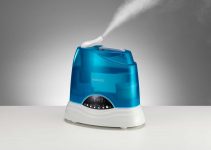 Although there is some disagreement as to what qualifies as ‘good air quality’, most people agree that certain particles in the air are harmful. Many scholars believe the standard of purity to be the level of comfort of occupants of a building. Others note that what is comfortable to some may not be comfortable to others.
Although there is some disagreement as to what qualifies as ‘good air quality’, most people agree that certain particles in the air are harmful. Many scholars believe the standard of purity to be the level of comfort of occupants of a building. Others note that what is comfortable to some may not be comfortable to others.
Regardless of your stance on the definition of quality air, improving air quality in your home should always be a goal. Poor air quality in the home can lead to health problems if left unaddressed. Your home air might be subtly harming you and your family. You may not experience symptoms for years.
Indoor Air Quality Signs to Note
Here are some ways to check the quality of air present in your home or office:
1. Pay Attention to Your Allergies
It may be easy to blame a recent allergy attack on a change in climate or season patterns, but it could be because of contaminants in the air. Some individuals suffer allergies in response to a range of things, including a concentration of dust, pollen, and other irritants. These irritants can exist indoors as well as outdoors. Possible symptoms include watery eyes, headaches, coughing, sneezing, congestion and bloody noses.
If you’re suffering one of these health problems, pay more attention to the arrival and disappearance of the symptoms. If you start to experience problems shortly after walking into your home or office and notice the symptoms disappear when you leave, that location probably has poor indoor air quality.
2. Notice New or Unusual Symptoms
Most health ailments or symptoms start mild at first. Some contaminants, such as toxic mold spores, asbestos, and hazardous chemicals can greatly damage your health over time. If you start to experience nausea, dizziness, fevers, rash, fatigue, vomiting, chills, muscle pain, difficult breath, or loss of hearing, it is likely you will are experiencing a more severe issue.
If you experience any of these symptoms, you should see a doctor immediately. Your doctor can help you identify exactly what is causing your symptoms and get you on the path towards figuring out the source of what is making you sick.
3. Be Careful of Your Lungs
Contaminants in the air in your home or office can permanently damage your lungs. For instance, if you frequently experience pneumonia or bronchitis symptoms, it could be a direct cause of airborne molecules you are inhaling from your home.
If you fail to address these symptoms, they could progress and become life-threatening. There are some steps you can take to improve air quality. First, inspect your air system and clean it properly. Make sure you change air filters on a regular basis and also get yourself an air purifier system installed in your home. Addressing air quality concerns now can help protect you from serious health problems in the future.
4. Note Your Surrounding Environment
If you start noticing health problems associated with poor air quality, you should start searching for the cause immediately. First, look at the things in your home or office.
If there is new construction nearby, that may be to blame. Renovations, construction, or manufacturing can emit harmful particles and chemicals into the atmosphere, which can easily find their way into your home through ventilation and ducts. Unfortunately, we often have little control over these outside factors.
How to Find out If You are Having Poor Air Quality in Your Home
If you live in an area where houses are tightly packed, you should pay attention to your neighbors’ activities that may affect air quality. If they’ve recently treated their lawn with chemicals like insecticide, or painted their building, or used some other chemicals, all of these may find their way into your home and contaminate your indoor air.
Discovering simple environmental changes in your surrounding area will go long way to help you in minimizing the potential threat. Once you are able to identify the cause of your allergies, you will have a better idea of how to protect yourself.
1. Note Home Improvements or Repairs
Although your neighbor’s renovations can affect your air quality, sometimes you have to look no further than your own home. If you recently painted, floored, or did major updates in your home, the air may suffer because of these improvements. The chemicals can cling to your HVAC unit and begin to float around your home air. If this is the case, you will likely experience symptoms quickly.
To avoid these issues, be sure to properly clean up all debris after the completion of your project, and change your air filters right away. It would also be a good thing to purchase an air purifier for the improvement of the quality of your home air. They help get rid of potentially harmful molecules that were recently dispersed.
2. Rule Out Other Culprits
Apart for your neighbors or your recent home improvement activities, there are also environmental factors that cause health problems. You may be tempted to blame your own home air quality. Although air pollution is the primary culprit, there are other contaminants that can cause the symptoms you might be experiencing.
These types of problems include lighting, noise, thermal, or ergonomic discomfort. Each of these can result in coughing, sneezing, sleeplessness, eye discomfort, and a host of other health complaints. Be sure to confirm all of these problems are not present in your home before blaming it on outdoor air quality. Regardless, improving the quality of the air in your home will help combat contaminants that may enter it.
3. Look for Inconsistencies in Air Distribution
Whether or not you are experiencing health symptoms, you can still go as far to discover issues lingering by observing inconsistencies in your entire building. If one section is warmer or colder than the other, you will likely face challenges in your system that could be possibly harming the effectiveness of airflow purity.
To be sure of the balance of quality of air, you should also pay close attention to different areas humidity levels. Dryness or mugginess at a given place through the year can be a sign of poor indoor air quality. Depending on the situation, the use of a humidifier or dehumidifier can go a long way to restore humidity to a comfortable level.
4. Contact a Professional
If you happen to have noticed some of these signs, it’s best you consult a professional. They are in the best position to carry out testing on your home and inspect the whole property for problems you might not even know about. They will not only be able to tell you the source of the issue but offer an effective solution to restore air quality to a proper level. After the immediate problem is fixed, you will need a plan to make sure the problems don’t happen again.
For simpler problems, a humidifier or air purifier can solve the problem for you. Still, the problem may even be worse than you think. For instance, you may have to upgrade your HVAC unit or remove asbestos from your building. There are infinite numbers of causes that can lead to pollution of your air. An expert can help you find the best solution.
Why Indoor Air Quality Matters
Poor indoor air quality has a significant impact on the well-being of your family and your home’s overall health. Though some symptoms may be mild at first, they may also grow into complex health complications that may be life-threatening. Following these easy steps can help prevent the problems.
- Change air filters on a regular basis.
- Use an air purifier with a HEPA filter.
Improving air quality can help prevent serious health problems later on.
By paying close attention to any symptoms, you can work to quickly correct any issues.



